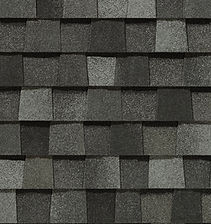The Ultimate Guide to Siding Underlayments: Housewraps and Exterior Insulation
- Staff
- May 26
- 3 min read
Updated: May 27
Choosing the right underlayment beneath your siding isn't just about what's available—it's about how well your home breathes, stays dry, and conserves energy. This guide breaks down the two main types of siding underlayments:
Housewraps – breathable, water-resistant layers
Exterior Insulations – rigid or reflective rolls or panels that improve thermal performance
Category 1: Housewraps (Weather-Resistive Barriers)
These materials are applied directly over wall sheathing to prevent water infiltration while allowing vapor to escape. Here they are ranked from highest to lowest performance.
Ranked by Performance
1. DELTA®-VENT SA
Performance: Excellent
Price: $$$$
Type: Fully adhered, vapor-permeable WRB
Highlights: Outstanding air sealing, no fastener holes, ideal for high-performance building envelopes
2. Tyvek® CommercialWrap / HomeWrap
Performance: Very Good
Price: $$$
Type: Spun-bonded breathable membrane
Highlights: Durable, water-resistant yet breathable, trusted brand

3. Typar® HouseWrap
Performance: Good
Price: $$
Highlights: High tear resistance and UV durability, slightly less breathable than Tyvek
4. Barricade® Wrap Plus
Performance: Fair
Price: $$
Highlights: Adequate water resistance, lower breathability and longevity
5. Generic Micro-Perforated Wraps
Performance: Poor
Price: $
Highlights: Perforated plastic that allows bulk water intrusion; outdated option
Category 2: Exterior Insulation (≤ 1" Thick or Slightly Over)
Exterior insulation improves energy efficiency, reduces thermal bridging, and helps walls stay warm and dry. Below, these are ranked by total R-value (R-value is a measure of thermal efficiency. The greater the R-value, the greater the efficiency)
Ranked by Total R-Value (Highest to Lowest)
1. Foil-Faced Polyisocyanurate (Polyiso)
Thickness: 1 inch
R-Value: 6.5
Price: $$$
Pros: Highest R-value in thin foam boards, reflects radiant heat
Cons: May lose performance in cold climates
2. Tyvek® ThermaWrap® R5.0
Thickness: 1.5 inches
R-Value: 5.0
Price: $$$$
Pros: Combines WRB and insulation in one, great for streamlining wall assemblies
Cons: Thicker than others on this list; more costly
3. Low-E Reflective Insulation
Thickness: ~1/4 inch
R-Value: 4.16 (with required air gap)
Price: $$
Pros: Thin and easy to install; blocks radiant heat
Cons: Requires air gap to reach rated R-value; not bulk insulation

4. Expanded Polystyrene (EPS)
Thickness: 1 inch
R-Value: 3.85 – 4.2
Price: $$
Pros: Affordable, easy to work with
Cons: Can absorb moisture if not faced
5. 5/8” FanFold EPS
R-Value: 2.7
Price: $$
Pros: Helps level walls and adds light insulation
Cons: Limited thermal value
6. 1/2” FanFold EPS
R-Value: 2.0
Price: $
7. 3/8” FanFold EPS
R-Value: 1.5
Price: $

Final Thoughts
For maximum thermal performance in minimal thickness, Foil-Faced Polyiso leads the way.
Tyvek® ThermaWrap® R5.0 is ideal when you want both a WRB and insulation in one step.
Fanfold and Low-E are great for low-profile, budget-conscious upgrades—just don't expect high insulation values.
Pairing a high-performance housewrap with exterior insulation is the best strategy for energy-efficient siding installations.
In the market for new siding? Make sure to choose a contractor that can explain all your different siding underlayment options, so you get the product that makes the most sense for your home and for your budget. If you live within our service area, call us today at (877) 846-9566, or fill out the form below. Or, if your siding has sustained hail or wind damage, schedule your free inspection online.






















